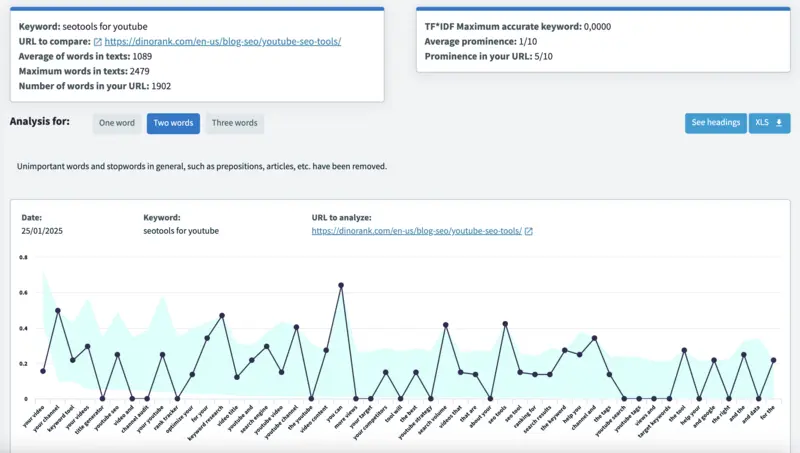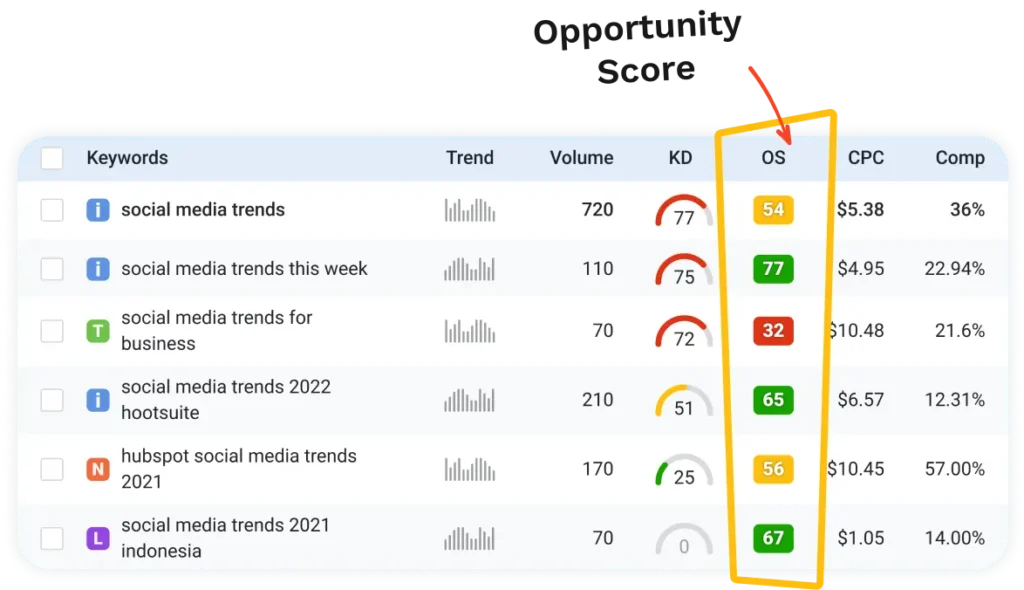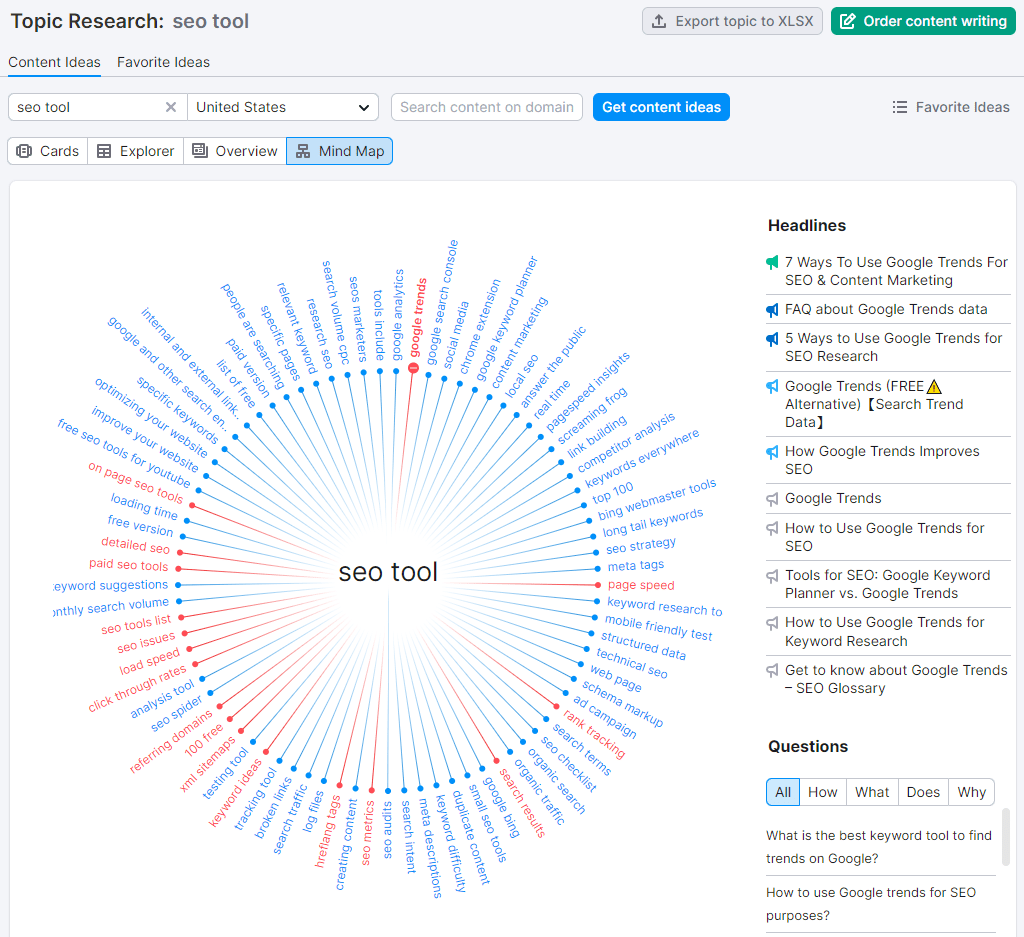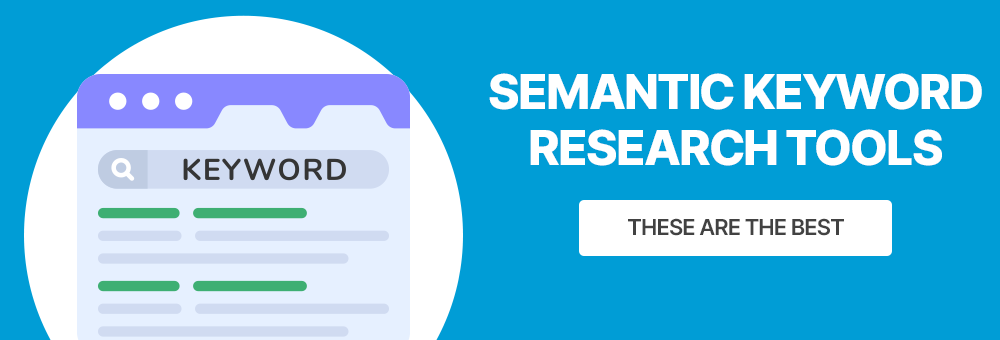Semantic keywords tools are essential for optimizing content in today’s SEO landscape. These tools help identify related terms that enhance the relevance of written material.
By understanding how search engines utilize semantic keywords, content creators can improve their strategies.
This article explores the significance and benefits of semantic keyword research, along with popular tools for effective implementation.
Understanding Semantic Keyword Research
Semantic keyword research is a critical aspect of modern SEO practices.
It involves identifying keywords that not only align with a primary search term but also enhance the contextual integrity of the content.
What are Semantic Keywords?
Semantic keywords refer to terms and phrases that are conceptually related to a main keyword. These keywords add depth and context, allowing search engines to understand the broader meaning behind the content.
For instance, if the primary keyword is “vegan recipes,” related semantic keywords might include
- “plant-based meals”
- “tofu preparation”
- “nutritional benefits”
- “cooking tips for vegans”
Incorporating these terms helps to create content that is comprehensive and informative, meeting user expectations effectively.
How Search Engines use Semantic Keywords?
Search engines utilize semantic keywords to better interpret the intent behind a user’s query.
Unlike traditional keyword matching, semantic searches focus on the meaning derived from the relationships between words. By analyzing multiple factors, including user behavior, context, and related terms, search engines can deliver more relevant results.
For example, when someone searches for “how to care for orchids,” a search engine recognizes the semantic intent and might show results that include care tips, watering schedules, and suitable environments for orchids, instead of merely returning pages that repetitively use the exact search phrase.
This leads to a richer search experience and helps users find the information they are genuinely seeking.
The role of Latent Semantic Indexing in SEO
Latent Semantic Indexing (LSI) is a technique that search engines use to identify patterns and relationships between terms within content.
LSI enables algorithms to comprehend contextual meanings, thus providing users with results that encapsulate the entirety of a topic.
Although LSI has evolved over time and isn’t explicitly named in modern algorithms, its principles remain fundamental to effective SEO strategies.
Incorporating LSI keywords can greatly enhance content by:
- Providing a comprehensive approach to keyword targeting.
- Diversifying vocabulary to avoid redundancy.
- Improving topical authority and comprehensiveness.
- Assisting search engines in gauging the overall theme and relevance of a webpage.
As search engines continue to prioritize user search intent and content quality, understanding and employing semantic keywords, along with the principles of LSI, becomes increasingly essential in optimizing web pages for better visibility and engagement.
Benefits of Semantic Keyword Search
- Enhancing Content Relevance
- Improving SEO Ranking with Semantic Keywords
- Avoiding Keyword Stuffing with LSI Keywords
- Increasing user engagement and satisfaction
Understanding the advantages of semantic keyword search is essential for enhancing digital content strategies.
By utilizing semantic keywords, content creators can achieve higher relevance, improved rankings, and greater user satisfaction.
Enhancing Content Relevance
Incorporating semantic keywords allows content to resonate more effectively with the target audience.
When content includes terms that are closely related to the primary topic, it creates a more comprehensive and engaging experience for the reader.
This is pivotal in establishing content relevance.
- Semantic keywords can enrich the contextual meaning of the content.
- They help convey the main idea more comprehensively.
- Including a range of related terms can address various user queries effectively.
Improving SEO Ranking with Semantic Keywords
Search engines prioritize content that demonstrates a strong understanding of a topic.
Semantic keywords contribute to this by providing search engines with additional context about the content. This approach can significantly enhance SEO rankings.
- Search engines assess the relevance of a page based on the alignment of its content with user intentions.
- Incorporating a broader array of keywords can help in reaching a wider audience.
- Higher SEO rankings often lead to increased organic traffic and visibility.
Avoiding Keyword Stuffing with LSI Keywords
Keyword stuffing, which involves the excessive and unnatural use of keywords, can lead to penalties from search engines. Semantic keywords offer a solution to this challenge by allowing content creators to diversify their terminology while remaining on topic.
- Using a variety of terms reduces the need to overuse the primary keyword.
- This strategy leads to more natural and engaging writing styles.
- It helps prevent negative SEO repercussions associated with keyword stuffing.
Increasing user engagement and satisfaction
When content is enriched with semantic keywords, it tends to be more informative and relevant to user queries. This level of relevance can drastically increase user engagement and satisfaction, fostering a sense of trust and authority.
- Users are more likely to stay longer on pages that provide comprehensive and relevant information.
- Semantic keywords facilitate exploring related topics, keeping users interested.
- Engaged users often share content, enhancing its visibility across platforms.
Top 4 Semantic Keyword Research Tools
Utilizing effective tools for semantic keyword research is essential for maximizing content relevance and enhancing SEO strategies.
Here’s a look at some of the leading tools available for semantic keyword analysis.
DinoRANK
DinoRANK has the “TF*IDF and semantic prominence” module, in which we can enter the main keyword for which we want to position our content and its url.
From these two data, it extracts a fairly large list of semantic keywords that are using the top10 organic results in Google.

These semantic terms are compared with the semantic richness of your content and tells you which ones to include in your content and which ones to reduce.
This list is a good semantic keyword research to use in your SEO strategy.

Google Trends and Keyword Planner

Google Trends and Keyword Planner are valuable tools for understanding keyword dynamics and audience interests.
They offer insights into what keywords are currently gaining traction.
Understanding Trends and Popular Keywords
Google Trends provides real-time information about how often specific keywords are being searched across various regions.
This can help in making content timely and relevant. Analyzing trends can assist content creators in identifying emerging topics that align with user interests.
Leveraging Google’s Tools for Your Content
Google Keyword Planner serves as an essential tool for identifying potential keywords for content strategy.
By inputting a seed keyword, users can discover related keywords, their search volumes, and levels of competition. This information is crucial for crafting content that meets user demand while optimizing for search engines.
LSIGraph for Latent Semantic Keyword Ideas
LSIGraph is a specialized tool that focuses on generating latent semantic indexing (LSI) keywords, enriching content with terms that enhance relevance and clarity.

Unique Offerings of LSIGraph
- Keyword Suggestions: LSIGraph generates a variety of semantically related keywords that can be seamlessly included in articles.
- Real-Time Data Updates: The tool is regularly updated, ensuring that keyword suggestions reflect current search trends.
- Simple Interface: Its user-friendly interface allows creators to quickly find and select relevant keywords.
Integrating LSIGraph Findings into Your Content
Using LSIGraph results effectively involves incorporating the suggested keywords naturally into the content.
Writers should aim to maintain a conversational tone while strategically placing these keywords in headings, subheadings, and throughout the body text. This not only improves the content’s relevance but also enhances readability.
SEMrush
SEMrush is one of the most robust platforms available for analyzing keywords, offering a comprehensive suite of tools to aid content creators in finding semantically related terms.
This tool not only provides keyword suggestions but also helps in tracking your overall SEO performance.

Features and benefits
- Extensive Database: Semrush boasts a vast database of keywords, allowing users to find related terms that can enhance content depth.
- Keyword Difficulty Analysis: It provides insights into the competitiveness of specific keywords, helping users make informed decisions.
- On-Page SEO Checker: This feature analyzes how well your web pages are optimized for chosen keywords, suggesting improvements for better rankings.
- Content Optimization: The tool gives writers suggestions on how to enhance content with semantically relevant terms, boosting overall quality.
Now you know how to use semantics through professional tools
Google takes into account the semantic richness of written content nowadays.
It is one of the many important factors, along with whether your content satisfies the users’ search intent with respect to what they searched for.
So apply these tips, see you on the SERP!


